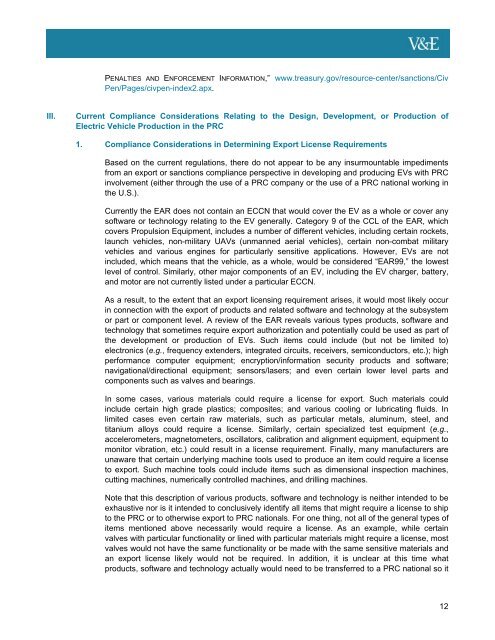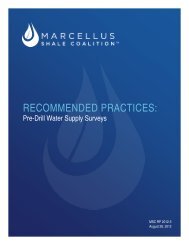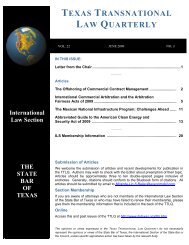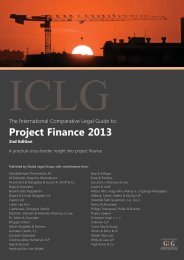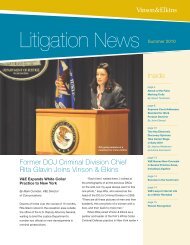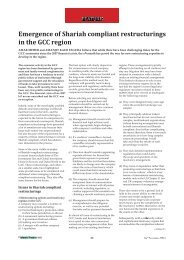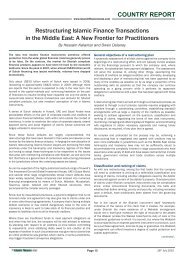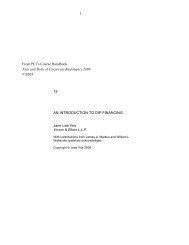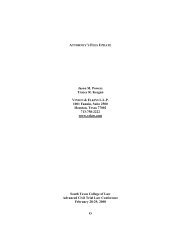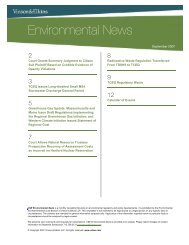Overview of U.S. Export Controls and Sanctions Issues Relating to ...
Overview of U.S. Export Controls and Sanctions Issues Relating to ...
Overview of U.S. Export Controls and Sanctions Issues Relating to ...
Create successful ePaper yourself
Turn your PDF publications into a flip-book with our unique Google optimized e-Paper software.
PENALTIES AND ENFORCEMENT INFORMATION,” www.treasury.gov/resource-center/sanctions/Civ<br />
Pen/Pages/civpen-index2.apx.<br />
III.<br />
Current Compliance Considerations <strong>Relating</strong> <strong>to</strong> the Design, Development, or Production <strong>of</strong><br />
Electric Vehicle Production in the PRC<br />
1. Compliance Considerations in Determining <strong>Export</strong> License Requirements<br />
Based on the current regulations, there do not appear <strong>to</strong> be any insurmountable impediments<br />
from an export or sanctions compliance perspective in developing <strong>and</strong> producing EVs with PRC<br />
involvement (either through the use <strong>of</strong> a PRC company or the use <strong>of</strong> a PRC national working in<br />
the U.S.).<br />
Currently the EAR does not contain an ECCN that would cover the EV as a whole or cover any<br />
s<strong>of</strong>tware or technology relating <strong>to</strong> the EV generally. Category 9 <strong>of</strong> the CCL <strong>of</strong> the EAR, which<br />
covers Propulsion Equipment, includes a number <strong>of</strong> different vehicles, including certain rockets,<br />
launch vehicles, non-military UAVs (unmanned aerial vehicles), certain non-combat military<br />
vehicles <strong>and</strong> various engines for particularly sensitive applications. However, EVs are not<br />
included, which means that the vehicle, as a whole, would be considered “EAR99,” the lowest<br />
level <strong>of</strong> control. Similarly, other major components <strong>of</strong> an EV, including the EV charger, battery,<br />
<strong>and</strong> mo<strong>to</strong>r are not currently listed under a particular ECCN.<br />
As a result, <strong>to</strong> the extent that an export licensing requirement arises, it would most likely occur<br />
in connection with the export <strong>of</strong> products <strong>and</strong> related s<strong>of</strong>tware <strong>and</strong> technology at the subsystem<br />
or part or component level. A review <strong>of</strong> the EAR reveals various types products, s<strong>of</strong>tware <strong>and</strong><br />
technology that sometimes require export authorization <strong>and</strong> potentially could be used as part <strong>of</strong><br />
the development or production <strong>of</strong> EVs. Such items could include (but not be limited <strong>to</strong>)<br />
electronics (e.g., frequency extenders, integrated circuits, receivers, semiconduc<strong>to</strong>rs, etc.); high<br />
performance computer equipment; encryption/information security products <strong>and</strong> s<strong>of</strong>tware;<br />
navigational/directional equipment; sensors/lasers; <strong>and</strong> even certain lower level parts <strong>and</strong><br />
components such as valves <strong>and</strong> bearings.<br />
In some cases, various materials could require a license for export. Such materials could<br />
include certain high grade plastics; composites; <strong>and</strong> various cooling or lubricating fluids. In<br />
limited cases even certain raw materials, such as particular metals, aluminum, steel, <strong>and</strong><br />
titanium alloys could require a license. Similarly, certain specialized test equipment (e.g.,<br />
accelerometers, magne<strong>to</strong>meters, oscilla<strong>to</strong>rs, calibration <strong>and</strong> alignment equipment, equipment <strong>to</strong><br />
moni<strong>to</strong>r vibration, etc.) could result in a license requirement. Finally, many manufacturers are<br />
unaware that certain underlying machine <strong>to</strong>ols used <strong>to</strong> produce an item could require a license<br />
<strong>to</strong> export. Such machine <strong>to</strong>ols could include items such as dimensional inspection machines,<br />
cutting machines, numerically controlled machines, <strong>and</strong> drilling machines.<br />
Note that this description <strong>of</strong> various products, s<strong>of</strong>tware <strong>and</strong> technology is neither intended <strong>to</strong> be<br />
exhaustive nor is it intended <strong>to</strong> conclusively identify all items that might require a license <strong>to</strong> ship<br />
<strong>to</strong> the PRC or <strong>to</strong> otherwise export <strong>to</strong> PRC nationals. For one thing, not all <strong>of</strong> the general types <strong>of</strong><br />
items mentioned above necessarily would require a license. As an example, while certain<br />
valves with particular functionality or lined with particular materials might require a license, most<br />
valves would not have the same functionality or be made with the same sensitive materials <strong>and</strong><br />
an export license likely would not be required. In addition, it is unclear at this time what<br />
products, s<strong>of</strong>tware <strong>and</strong> technology actually would need <strong>to</strong> be transferred <strong>to</strong> a PRC national so it<br />
12


